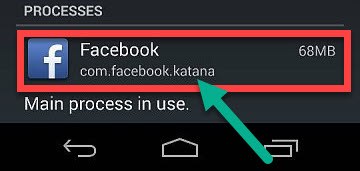Device Descriptor Request Failed
When we attach a USB device to the computer, the Universal Serial Bus device descriptor assists in deciding which gadget driver is supposed to be loaded. Your PC will not detect your attached USB device if the USB device descriptor fails. “Unknown USB Device (Device Descriptor Request Failed)” will appear as an error code. Let’s see how to fix this issue.

Introduction to USB
All the USB (Universal Serial Bus) devices include many basic descriptors that contain all of the necessary documents for the host to immediately configure the disc and begin normal operation. The device descriptor, which essentially ensures that the device works properly in all contexts, is the most basic one.
USB (Universal Serial Bus) devices may be the primary choice for transferring information from one location to another. USB flash drives, memory cards, pen drives, and other USB devices are available. They are compact, portable, and have a great capacity, allowing users to transport significant amounts of data or transmit data between devices. The USB device descriptor is capable of storing data about USB drives and distinguishing different USB devices. If it doesn’t work properly on Windows 10, the system won’t recognize the USB device, and you’ll get warnings like code 43. Depending on your machine, you may receive one of the following notices when you connect the USB device:
- The most common issue message is: “USB DEVICE_DESCRIPTOR_FAILURE”
- The next notice is same as the first one: “Unknown USB device (device descriptor request failed) code 43.”
- You can see a long text message: “Try reconnecting the device. If Windows still does not recognize it, your device may not be working properly.”
- Code related to the issue: “USB vid_0000&pid_0008 5&3a33fe6e&0&5”
- Another long text message of not recognizing: “One of the USB devices attached to this computer has malfunctioned, and Windows does not recognize it.”
- May your windows popup this text: “USB device not recognized. The last USB device you connected to this computer malfunctioned, and Windows does not recognize.”
Do not miss:
- DNS_Probe_Finished_Nxdomain
- Virtual memory Windows 10
- Turned off by administrator encryption policy or credential storage
USB Configuration is quite different from USB Device Descriptor:
The device descriptor is a file that describes a USB device as a bunch. This subject explains the Universal Serial Bus Device Descriptor structure and additionally explains about the way the client driver can extract the device descriptor by dispatching a get-descriptor request.
A configuration descriptor describes a USB configuration. A configuration descriptor describes the config, including its interfaces, alternate settings, and endpoints. A Universal Serial Bus Interface Descriptor structure describes every interface description or alternate configuration. Each interface descriptor in a configuration is accompanied with memory by all endpoint descriptors for both the interface and alternate setting. A USB Endpoint Descriptor structure is used to record each endpoint descriptor.
What causes the “Device Descriptor Request Failed” error?
This “Device Descriptor Request Failed” or “Unknown USB Device” error occurs specifically because of hardware or system-specific problems. A few of the sources of such a kind of problems are:
- A user might have faced few issues related to the most recent software upgrades, which would ultimately lead to the corruption of the USB drivers. As a response to which you see this error.
- There might have been few problems whenever some of your system’s parts were being replaced.
- You would have made mistakes while defining the settings of your desktop USB drivers.
- Desktops USB drivers might have been broken or might be malfunctioning.
- The USB drive has been tampered with, corrupted, or contaminated from malware.
- The USB drivers have been corrupted or are out of date.
- The BIOS needs to be updated.
- There might have been encryption of the system files due to malware and other viruses.
Methodology to implant the “Device Descriptor Request Failed” error:
If you’re having difficulties with this problem right now and don’t know how to fix it, there is a set of solutions to overcome with such issues:
Mechanism 1 – Examine the USB device’s and connection’s status
Step a: Unplug the USB device that is causing the not recognized issue and plug it into another USB port to test whether Windows can recognize it properly. This will determine if the problem is due to a damaged port.
Step b: To see if the USB device descriptor problem is caused by the PC, connect the device to a different computer.
Step c: Remove the laptop’s power cord.
Step d: After that, restart the computer and plug in the USB device.
This procedure will assist you in rectifying the error if it is any of the hardware issues. If this is not the scenario, move to the next mechanism.
Mechanism 2 – Unknown USB Device Driver should be reinstalled.
We’ll uninstall the drivers for the Unknown USB (Universal Serial Bus) Device (Device Descriptor Failure) using this technique. This complication can also arise from defective drivers. This could have occurred because Windows updates the drivers automatically through Windows Update, and it may have installed incorrect or damaged drivers. So, in this way, we’ll delete the Unknown USB Device drivers so that default drivers can be restored.
Step a: To access Device Manager, right-click the Start menu button and pick Device Manager from the menu that appears.
Step b: Now search for the yellow item Unknown USB Device. It can be found under the USB Controllers section. Please right-click on the Unknown USB (Universal Serial Bus) Device and explore it.
Step c: Select “Uninstall device” from the options that appear on the screen.
Step d: If the device wasn’t already unplugged, unplug the USB device from the system and re-plug it into the SATA connector.
Step e: Further to inspect for any hardware variations. Specify the “Scan for Hardware Changes” option amidst the Device Manager window pane.
The Unknown USB Device Drivers will now be reinstalled by Windows. This should take care of the issue. If the error remains unsolved, move on to the next step.
Mechanism 3 – Use the Hardware and Device troubleshooter.
To repair a USB (Universal Serial Bus) device descriptor failure, use the Hardware and Device troubleshooter. If we have the Windows 10 Creator Update loaded on the machine, users can use the new troubleshooting tool to resolve the issue. It is indeed a built-in universal troubleshooting tool for Windows that can be used to diagnose and restore a variety of system issues.
Step a: Tap the Settings button from the “Start” screen.
Step b: Select Update & Security from the pop-up box.
Step c: On the left sidebar, click “Troubleshoot,” and on the right side of the window, search for the Hardware and Devices item.
Step d: Press the “Run the troubleshooter” button and wait for it to complete. It will instantly correct any faults that are discovered.
Mechanism 4 – USB Selective Suspend Settings should be disabled
Step a: In the Windows 10 search box, type edit power plan. Please select a search result by clicking it.
Step b: Change advanced power settings by clicking on them.
Step c: A tiny Power Options window will appear. Inspect for USB Settings and tap on it to enlarge it.
Step d: Extend the USB selective suspend setting immediately. All of the entries’ statuses must be set to Disabled. Subsequently, afterward, select OK and then Apply.
Mechanism 5 – Fast Startup should be disabled.
We’ll use this strategy to try to solve the problem by disabling rapid startup. This strategy has been reported to work for a number of users. Because Windows 10 starts up quickly, many USB gadgets are not acknowledged by the operating system they use. Follow the below discussed steps for disabling the Fast Startup:
Step a: In the Windows 10 search box, type Powercfg.cpl. Please select a search result by clicking it.
Step b: Choose the “Choose what the power button does.” It’s on the left end of the window.
Step c: Choose “Change Settings that are currently unavailable” among the options available.
Step d: You must uncheck the item next to Turn off a rapid startup. It can be found underneath the Shutdown settings menu. Then press the Save changes button.
Step e: Finally, reboot the computer.
Confirm to look if the error has been resolved after restarting the machine. If the problem sustains, follow the next methods to solve the issue.
Mechanism 6 – Drivers for USB devices should be updated.
We’ll use this technique to try to sort the proceeding by updating the drivers. Because rolling them back did not solve the problem in the previous manner, your computer’s drivers are most likely obsolete. Follow the steps discussed below for updating drivers for USB devices:
Step a: Access Device Manager with a right-click on the Start menu option.
Step b: Next, browse through the list for Unknown USB Device. It can be found underneath the USB, which is Universal Serial Bus Controller menu. Right-tap on Unknown USB (Universal Serial Bus) Device and explore it.
Step c: Tap on the Update Driver menu.
Step d: Choose Automatically search for obtaining the updated driver software on the system.
The updated drivers for the problematic USB device will now be downloaded and installed by Windows. Whenever the process is finished, reboot your pc, and the issue would be eliminated.
Mechanism 7 – Recur the Power Supply
If the issue is caused by a lack of power, this procedure can quickly resolve the issue. This approach is only appropriate for use on a laptop.
Step a: Unplug the laptop’s power cord.
Step b: Re-insert the USB device.
After restarting Windows, USB Root Hubs will be recognized as new devices, and their drivers will be installed automatically. This should resolve the issue. Plug the USB device into the USB slot; it should now function properly.
Mechanism 8 – Error Troubleshooting
Throughout the previous method, we’ll use Windows Troubleshoot to strive to resolve the problem. Windows Troubleshoot is a built-in utility in Windows that looks for and repairs problems.
Step a: Unfasten Troubleshoot. Open Troubleshoot by typing Troubleshoot into Cortana. From the list of options, choose Troubleshoot.
Step b: A Troubleshoot window will appear after the final step. Choose Hardware and Devices from the scroll-down list.
Step c: Now, Windows will do a check to monitor if the problems were sustained. When the above steps are completed, select either Apply this Fix or Apply Repair Automatically option.
Step d: Restart your computer after applying the update.
Conclusion:
This could also occur whenever an SD card is plugged into the card reader, and the system will no longer read it. We just went over a few options for dealing with the problem of unrecognized USB devices (Device Descriptor Request Failed). We hope that these ways will be of use to you, and that you will be able to repair them. Also, if the USB device contains sensitive information, you should use data recovery before attempting any repairs.

![wpa-psk [tkip] + wpa2-psk [aes]](https://basicknowledgehub.com/wp-content/uploads/2021/05/wpa-psk-tkip-wpa2-psk-aes-768x402.jpg)
